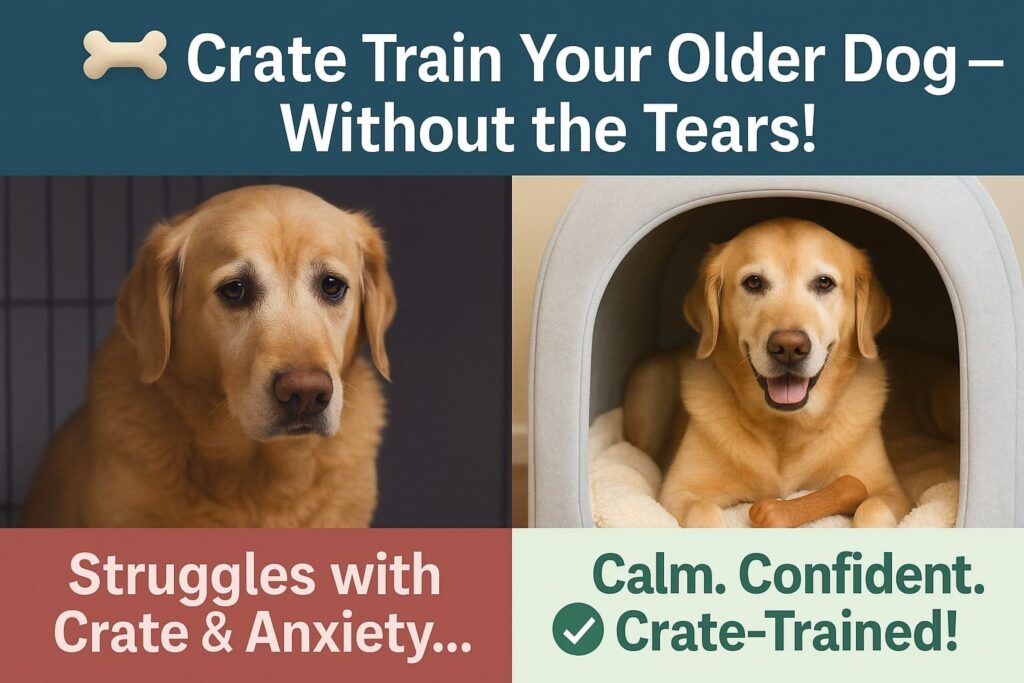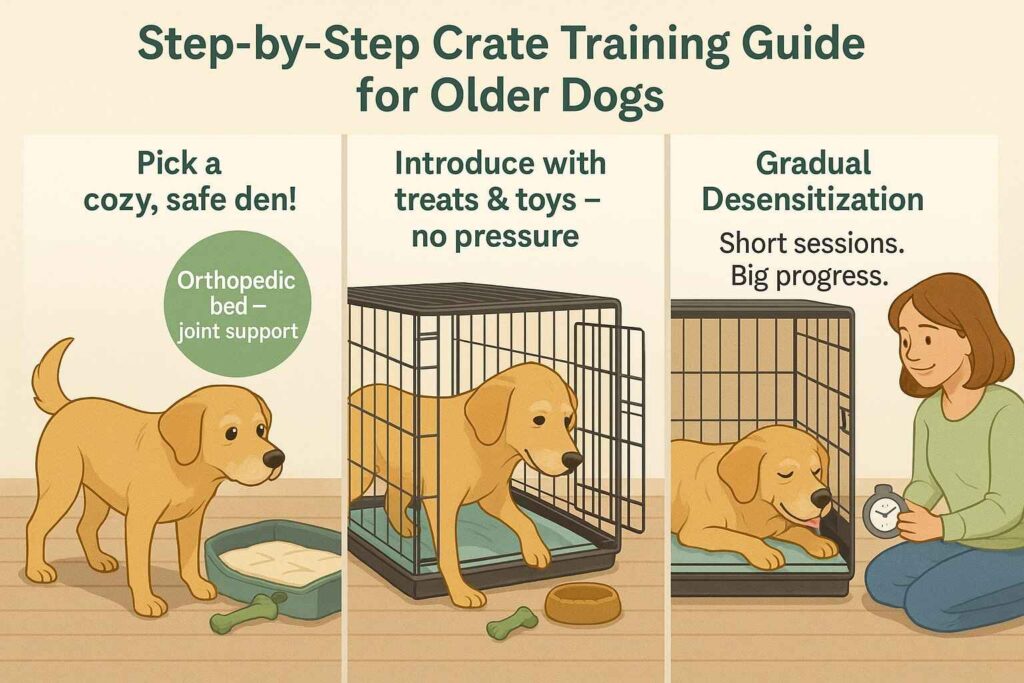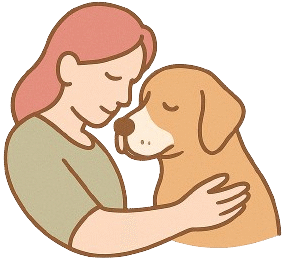Imagine this: you walk through the door after a long day, only to find your older dog has turned your living room into a chew-toy war zone—again. If that sounds familiar, you’re not alone.
Older dogs with separation anxiety can struggle big time when left by themselves, and it’s heartbreaking to see them so stressed. That’s where crate training comes in.
It’s not just for puppies—it’s like giving your senior pup a cozy safe haven to chill out in. In this article, I’ll walk you through how to crate train your older dog, even if they’re dealing with separation anxiety.
Ready to turn chaos into calm? Let’s get started!
Understanding Separation Anxiety in Older Dogs
So, what’s separation anxiety all about? Picture your dog thinking, “Oh no, they’re leaving me forever!” every time you grab your keys. It’s that panic that hits when they’re alone, and for older dogs, it can show up as whining, pacing, or even tearing up your favorite slippers.

Why are older dogs more prone to this? Well, as they age, routines change—maybe you’re working more, or they’re dealing with achy joints or hearing loss. Sometimes it’s past trauma from a shelter or a big life shift.
Ever noticed your pup acting clingier lately? That’s a clue. Understanding this is step one to helping them feel secure again.
Crate Anxiety vs. Separation Anxiety
Now, here’s where things get tricky: is your dog freaking out because of the crate or because you’re gone? Crate anxiety is like being scared of a spooky closet—they hate being shut in. Separation anxiety? That’s more about missing you, crate or no crate.
Here’s a quick way to tell:
- Crate Anxiety: They panic the second the door closes, even if you’re right there.
- Separation Anxiety: They’re fine in the crate until you leave the room.
Mixing these up can mess with your training plan, so let’s get it right. Don’t worry—it’s a common mix-up, and we’ll sort it out together!
Can You Crate Train an Older, Anxious Dog?
You might be thinking, “My dog’s too old for this—they’ll never get it!”
But here’s the good news: yes, you absolutely can crate train an older dog, even with anxiety. It just takes a little patience.
Take my friend’s 10-year-old rescue, Zeb. He’d howl every time she left, but after a few weeks of gentle crate training, he was napping in there like a champ.
Experts agree: with the right approach, age doesn’t matter. So, toss out that “too old” excuse—your pup’s got this, and so do you!
Step-by-Step Crate Training Guide
Choosing the Right Crate for an Older Dog
First things first: pick a crate that’s like a comfy den. For older dogs, size matters—big enough to stand and turn around, but not so huge they feel lost. Add a cushy bed (orthopedic if they’ve got creaky joints) and maybe a blanket. Think of it as their personal chill spot.
Positive Crate Introduction Techniques
Start easy. Leave the crate door open, toss in some treats or a favorite toy, and let them sniff around. No forcing—just let them figure out it’s a good place. I’d say, “Hey, look at this cool treat cave!” and watch their curiosity kick in.
Gradual Desensitization for Anxiety
Here’s the key: go slow. Close the door for 5 seconds while you’re nearby, then open it and praise them. Build up to a minute, then five. If they panic, back off a bit. Small wins add up—trust me, you’ll see progress.
Sample Crate Training Schedule for Adult Dogs
Need a plan? Try this:

- Day 1-2: Open crate, treats inside, let them explore.
- Day 3-5: Feed meals near the crate, then inside with the door open.
- Week 2: Short door-closed sessions (5-30 seconds), lots of praise.
- Week 3: Leave the room for a minute, then longer as they relax.
Tweak it based on your dog’s vibe—slow and steady is the name of the game.
Managing Anxiety During Training
Tips for Nighttime Crate Anxiety
Does your dog turn into a midnight DJ, howling in the crate? Try putting it in your bedroom at first—they’ll feel less alone. A white noise machine or a calming pheromone spray can work wonders too. Worked like a charm for my neighbor’s pup!
Solutions for Dogs Freaking Out When Left Alone
If they lose it when you’re gone, leave a shirt you’ve worn in the crate—your scent’s like a security blanket. A stuffed Kong can keep them busy too. Start with short absences (like 2 minutes) and stretch it out. They’ll get the hang of it.
Common Mistakes to Avoid
Okay, let’s dodge some pitfalls I’ve seen on dog forums:
- Forcing Them In: Shoving your dog into the crate? Big no-no—it’s punishment vibes, not safety.
- Rushing It: Skipping steps can backfire, making them hate the crate more.
- Ignoring Panic Signs: If they’re trembling or drooling, pause and reassess.
Mistakes happen—we’ve all been there. The good news? You can always tweak and try again.
Crate training an older dog with separation anxiety isn’t a quick fix, but it’s so worth it. You’re giving them a safe space and some peace of mind—and hey, maybe saving your couch too! Stick with it, celebrate the little victories, and soon your pup might just love their crate.
Have a crate training story? Drop it in the comments—I’d love to hear how it’s going for you!
FAQs
Can you crate train an older, anxious dog?
Yep, with time and love—age isn’t a dealbreaker.
How do I help my senior dog with separation anxiety?
Crate training’s a start, but chat with your vet about calming aids too.
What if they still panic in the crate?
Slow down, add treats or toys, and maybe try a thunder shirt.
